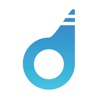Software Development for Organization Application
- Application Management & Support Custom Software Development
- $50,000 to $199,999
- Apr. 2019 - July 2020
"Their technical knowledge stands out the most."
- Information technology
- Slovenia
- 11-50 Employees
- Phone Interview
- Verified
Dream Factory provided development on an existing platform to turn it into a development environment for other developers. They built a technical bridge allowing users to leverage additional frameworks.
The decentralized platform offers strong security protections, pleasing the client. Dream Factory's expertise in diverse frameworks led to a more effective product. They've also provided robust communication, planning, and management. Customers can expect a cost-effective, trustworthy partner.

